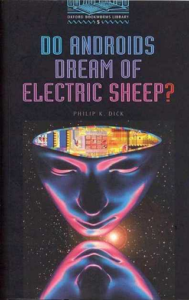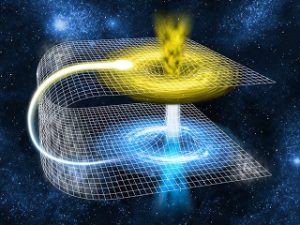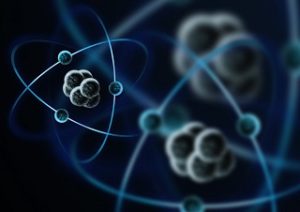
Arquivo para a ‘Neurociência’ Categoria
The singularity and the tecnoprofetas
Before Jean-Gabriel Ganascia talked about the Myth of Singularity, the idea that machines would surpass man in human capacity, had already been analyzed by Hans Moracev in his work: Men and Robots – the future of human interfaces and robotics, careful and ethical Ganascia did not fail to quote him.
machines would surpass man in human capacity, had already been analyzed by Hans Moracev in his work: Men and Robots – the future of human interfaces and robotics, careful and ethical Ganascia did not fail to quote him.
There are groups that study the ethical issues that this involves as the Center for the study of existential risk at Cambridge University, but also groups engaged in this project with University of Singularity, with weight sponsors such as Google, Cisco, Nokia, Autodesk and many others, but there are also ethical studies such as the Institute for Ethics and Emerging Technologies that Ganascia participates in, and the Institute of Extropia.
In the account of technoprofetas, the word was coined by Ganascia, a genius prejudice Kurzweil is one of the most extravagant, injected drugs in the body preparing to receive the “computational mind”, but with prediction for 2024 already spoke and now it is for 2045 to 2049 , something that is incredible for someone who is said to have no beliefs, for this fact is very distant if it occurs.
Ganascia thinks this is a false prophecy and Moracev analyzes the difficult real possibilities.
The Gartner institute that works on forecasting predicts neural computing still crawling with predictions for 20 years from now, interfaces like Amazon’s Alexa and Hanson’s Sophia, are human interaction machines that learn things from everyday language but are far from the so-called machines of a general artificial intelligence, because human reasoning is not a set of propositional calculations as they think.
One can argue more this is because people are illogical, but this according to what logic, what we know is that men are not machines and what we ask if machines are men, is the essential question that inspired the series Blade Runner, the book of Philip K. Dick “Do androids skeep dream of electric sheep” from 1968, which inspired Blade Runner.
I think dreams, imagination and virtuality are faces of the human soul, robots have no soul.
History of the algorithm
The idea that we can solve problems by proposing a finite number of  interactions between several tasks (or commands as they are called in computing languages) for several problems originates in Arithmetic.
interactions between several tasks (or commands as they are called in computing languages) for several problems originates in Arithmetic.
Although the machine of Charles Babbage (1791-1871) and George Boole’s (1815-1864) Algebra make a huge contribution to modern computers, most logicians and historians of the birth of the digital world agree that the problem of fact was raised by David Hilbert’s second problem (1962-1943) at a 1900 conference in Paris.
Among 23 problems for mathematics to solve, some recently solved such as Goldbach’s Conjecture (see our post), and others to solve, the second problem was to prove that arithmetic is consistent, free from any internal contradiction.
In the 1930s, two mathematical logicians, Kurt Gödel (1906-75) and Gerhard Gentzen (1909-1945) proved two results that called new attention to the problem proposed, both referring to Hilbert, so in fact, there is the origin of the question, roughly, if an enumerable problem is solved by a finite set of steps.
In fact, Gentzen’s solution was a proof of the consistency of Peano’s axioms, published in 1936, showing that the proof of consistency can be obtained in a system weaker than the Zermelo-Fraenkel theory, used axioms of primitive recursive arithmetic , and is therefore not general proof.
The proof of the inconsistency of arithmetic, called Gödel’s second incompleteness theorem, is more complete and shows that some proof of the consistency of Peano’s axioms can be developed without this arithmetic itself.
This theorem states: if the only acceptable proof procedures are those that can be formalized within arithmetic, then Hilbert’s problem can not be solved, in other more direct form, if the system is complete or consistent.
There are polemics raised about these results, such as Kreisel (1976) who argued that the proofs were syntactic for semantic problems, Detlefsen (1990) who says that the theorem does not prohibit the existence of a proof of consistency, and Dawson (2006) that the proof of consistency is erroneous using the evidence given by Gentzen and Gödel himself in 1958 work.
The controversies aside, Kurt Gödel’s participation in the important Vienna circle in the 1920´s before the war exploded, and the subsequent discussions of his theorem by Alain Turing (1912-1954) and Claude Shannon (1916-2001) underline its importance for the history of algorithms and modern digital computer.
Utopia and Confusion
Before proceeding to show the relation between being and technique,  one must make a digression for the catastrophic technician-prophecies and the confucioness, that is to say, it is called network nor everything that is network, lends itself the artificial intelligence to human while the opposite is true, and finally, post-human machines are created without an existential response to man.
one must make a digression for the catastrophic technician-prophecies and the confucioness, that is to say, it is called network nor everything that is network, lends itself the artificial intelligence to human while the opposite is true, and finally, post-human machines are created without an existential response to man.
Brade Runner 2049 could not succeed, who better than the first one takes a plunge into the human existential problem, while “Androids dream of electric sheep?” Asks in his book Philip K. Dick, who inspired the films of the series, is 1968 (sic), including a hardcover edition to celebrate the 50 years recently.
Confusioness is a term coined by Lucien Sfez, who in addition to communication participated in the projects Genome, Biosphere II and Artificial Life, so it is not someone who speaks without understanding the possibilities, the daydreams and the challenges of technology.
At the same time recognizes, among the daydreams of course, “The utopia of a total record; to make a being in our image, as a man is that of God, thanks to science, indisputable, transparent, luminous as a sacred gladius; the belief in the omnipotence of an electronic science; the illusion of freedom; and the creation of a perfect machine “(SFEZ, 1996).
I would not use the word utopia, I consider it a confusioness one, since what Thomas Morus wrote would be a community society without attachments and with a “social health” greater than that dreamed by the Enlightenment, and which is the very science that created this confusional and not Thomas Morus (1478-1535), was not a dreamer was a statesman, held various public offices, including Henry VIII’s chancellor, who was precisely his tormentor for religious reasons.
The limits of the technique are within the possibilities and challenges, among these are those that allow space travel no longer in large ships, but in micro-ships that would travel in quantum worm-holes and computers that use larger techniques volume of data, with greater volume of data communicated and processed.
In the field of possibilities it is worth reading “Physics of the Impossible” (2008) by Michio Kaku, among the field of challenges is worth reading “Le Mythe de la Singularité” by Jean-Gabriel Ganascia (2017), who tunes the challenges of Artificial Intelligence and punctuates points of pure fantasy.
I will not resort to more arguments, it is impossible to convince anyone in the field of hypotheses does not abandon the hypothesis of the transhuman or the machine smarter than the man, just see the delusions about today’s social media, use the argument of a saint, perhaps few will know this phrase of St. Francis: “Begin by doing what is necessary, then what is possible, and suddenly you will be doing the impossible”, it is true that it speaks in the field of mysticism, but who said that it is separated from the physical world or at least the meta- physicist.
SFEZ, Lucien. (1996) Saúde Perfeita – crítica a uma nova utopia (Perfect health – criticism of a new utopia). São Paulo: Loyola.
Phantasmagoric and realism
Undoubtedly, reality may not only be what our senses indicate, but also the senses are part of a good discovery of reality, one can use a glasses, a microscope and a powerful telescope to see reality, but using the eye.
indicate, but also the senses are part of a good discovery of reality, one can use a glasses, a microscope and a powerful telescope to see reality, but using the eye.
What is difficult to imagine is how constructing narratives can deceive reality, can make it different from what the simple vision indicates, for example, it could be imagined that quantum physics would give rise to a called the “physical world”.
Einstein, Podolsky and Rosen; three eminent physicists at the time, wrote an article that counterposed the idea of quantum physics, that quanta occupied a space between “pulses” and that there was nothing between them, they said three physicists was a “phantasmagoric” distance action and mathematically proved to be something impossible, the phenomenon became known as EPR (initial letters of the authors).
Recently, in a study led by Ronald Hanson and published in Nature magazine in 2015, the Delft University of Technology in the Netherlands reported having done an experiment which, according to them, proves one of the most fundamental assumptions of quantum theory – that separate objects by a great distance can affect one to other.
The apparitions of Jesus, in various events, after his departure and resurrection brought astonishment and even fear to his disciples, in a little known passage appears to several people and says (Lk 24: 38-39): “Why are you worried, and Why do you have doubts in your heart? See my hands and my feet: it is I myself! Touch me and see! A ghost has no flesh, no bones, as you see I have, ”
Unfortunately he is still a ghost and even a legend to many.
The false technoprofetes
The idea that the machine is evil, besides being an obvious anti-progress conception, seeks without knowing them to disprove Kranzberg’s first law: technology is not good, neither bad nor neutral, but in general, its other 5 laws: 2nd – invention is the mother of need, 3 th technology is developed in “packages”, 4th technological policies are decided, based on non-technical criteria, 5 th. – all history is important, but the History of Technology is the most relevant area, and, 6th. – Technology is a human activity, the History of Technology as well.
seeks without knowing them to disprove Kranzberg’s first law: technology is not good, neither bad nor neutral, but in general, its other 5 laws: 2nd – invention is the mother of need, 3 th technology is developed in “packages”, 4th technological policies are decided, based on non-technical criteria, 5 th. – all history is important, but the History of Technology is the most relevant area, and, 6th. – Technology is a human activity, the History of Technology as well.
Jean-Gabriel Ganascia, in his book “The Myth of Singularity: Should We Fear Artificial Intelligence?” (Lisbon: Círculo de Leitores, 2018) unmasks the idea that in the foreseeable future, some mark the year 2045 as machines can come forever completely autonomous and replace the human intelligence that ultimately is what programs and governs.
He quotes among several others who believe in this prophecy, whose point of overcoming is called the point of singularity, Raymond Kurzweil, that part of his precocious genius, at the age of 15 wrote a program that scores piano music, prepares his body and his mind to be “Loaded” (a cybernetic download) on a future machine.
Another technoprofetes quoted by Ganascia is Hans Moravec, who wrote “Men and Robots: The Future of Human Intelligence and Robotics” (1988) and “Robot: More Machines to Transcendent Mind” (1998) that would lead to a radical transformation of humanity.
One last, quoting quote, Kevin Warwick wrote I, Cyborg in a clear allusion to Eu, Robot, and who became known to the public for introducing a chip encapsulated in a skin into the skin to command a series of actuators remote, but it seems that his project was a failure, says Ganasci (page 13).
Philosophers do not stand still, I leave aside here the critics of the current digital technologies, to go to futurist technoprofetas, worthy of mention and quoted by Ganascia, Nick Bostrom, training physicist, makes prophecies in his writings, and particularly a sales success :
Superintelligence: Paths, Dangers, Strategies, predicting among other things the trans-humanity.
Among the catastrophic technoprofetes, Ganascia quotes Bill Joy, co-founder of Sun Microsystems, who wrote an article: “Why the future does not need us,” the author goes from Leibniz to Lyotard to show why these theses seem real in our time , but not in the studies and results of Artificial Intelligence.
They are indeed technoprocesses, but out of time, the time of oracles and prophets is of orality.
Nature and man: transubstantiation
Every crisis occurs having a deep bond of the relationship of man with nature and  in function of this change, social relations between men change.
in function of this change, social relations between men change.
It was at the beginning with the planting and the domestication of the animals, which made it possible for the nomadic man to become more sedentary, but the present time, that of modernity, man has lost the ability to identify what binds him to the animal, to which is alive, to nature, paradoxically just when science and “philosophy speak of” dominating nature ”
Already the crisis, in the current limit, + and inability of perception of what in nature differs from it, ecological, transgenic and bioengineering problems.
Man being a piece of nature, and in return, nature produces hominization, Teilhard Chardin stated that man is the complexification of nature, Edgar Morin (2005) states that man guides and follows nature.
The historical question leads us to reflect on the kind of relationship we establish with nature, including our own nature, what we are as the substance of the universe, and the Eucharistic enigma: because God became substance: bread and wine, on this date Christian who recalls this last and greatest miracle of Jesus.
We can see in this physical reality (the substance) the landscape must be understood as physical reality extended as social construction? The logical answer is yes.
But in a constant world of transformation, of social mores, artifacts, and indeterminate places, the landscape between nature and society has evolved; it is already both nature-object and subject-nature, does this dichotomy evolve?
Perhaps we are more ready to understand the miracle of transubstantiation, God has become artifacts of man, two universal artifacts: bread-food and wine-drink.
New discoveries of homo sapiens
In na Israeli cave called Misliya, facial fragments were found with the jaw and several teeth that can be dated in about 200,000 years, Homo sapiens is older than we thought, and then migrated from Africa
that can be dated in about 200,000 years, Homo sapiens is older than we thought, and then migrated from Africa
Facial fragments, including the jaw part and several teeth were found at the archaeological site Misliya Cave, located on Mount Carmel , it bone are between 177,000 and 194,000 years old.
Co-author Rolf Quan told the magazine: “It’s an exciting discovery, it provides clear evidence that our ancestors migrated from Africa much sooner than we believed.”
The fossil that was called Misliya-1 has teeth like modern humans, as well as showing characteristics of the human species, and other evidence showed that they hunted large animals and used fire, stone tools and sophisticated blades for the time were also found on site.
Also group immigration through the rivers, suggests techniques of expansion of territory and strengthen the idea of homo sapiens.
Recently other fossils of about 300,000 years have been found in Morocco, and then in Israel, which were already lights on this immigration, and this reinforced the idea that they traced a route along the Nile valley (the need for water) and not by a route through the Bab al-Mandeb Strait, the coast of Saudi Arabia, then to the lesta of Asia and the Indian subcontinent, said another co-author Israel Hershkobitz of Tel Aviv University.
The fact that they went in small groups and along the rivers shows a strategy of conquest and not of nomadic tribes in exodus, which further strengthens the sapiens hypothesis.
http://www.sciencemag.org/news/2017/06/world-s-oldest-homo-sapiens-fossils-found-morocco
The humans of Mislya were nomadic and migrated throughout the region in search of food and sought caves to shelter.
Deacon and the Biosemiotic
Incomplete Nature: How Mind Emerges from Matter is a book by  Terrence Deacon, an anthropologist and biosemiologist, who addresses the origins of life and the philosophy of mind, with new attempts to respond to how nature has emerged.
Terrence Deacon, an anthropologist and biosemiologist, who addresses the origins of life and the philosophy of mind, with new attempts to respond to how nature has emerged.
The book seeks to explain concepts such as intentionality and normativity in a different purpose from that of phenomenology, but considering them with a more functionalist purpose, calls entenational (in the ontological sense), but grouped and therefore “national”.
The book explores the properties of life, the emergence of consciousness and the relationship between evolutionary and semiotic processes. The book speculates on how properties such as information, value, purpose, meaning, and ultimate directed behavior have arisen from physics and chemistry.
Critics of the book argue that Deacon strongly lured the works of Alicia Juarrero and Evan Thompson without providing complete quotes or references to the author, but an UC Berkeley investigation has cleared Deacon who is a professor there.
In contrast to the arguments presented by Juarrero in Dynamics of Action (1999, MIT Press) and by Thompson in Mind in Life (2007, Belknap Press and Harvard University Press), Deacon explicitly rejects the claims that living or mental phenomena can be explained by dynamic systems approaches.
Instead, Deacon argues that the properties of life or mind only emerge from a higher order reciprocal relationship between self-organized processes.
Terence Deacon will be in São Paulo at the EBICC Cognitive Science event.

